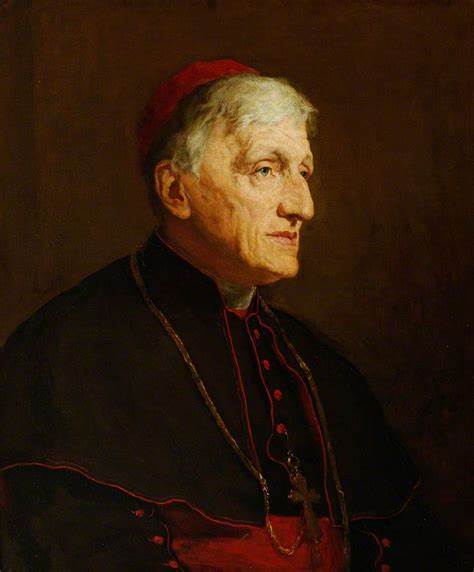There is a fair bit of uninformed talk in the church during this synod on synodality about the development of doctrine. Various hot button issues are discussed in breathless terms by progressives who are all excited about the possibility of change.
First we should affirm that, while church doctrine does not change our understanding of the doctrine may develop. After all, Jesus promised that the Holy Spirit would teach us all things and lead us into all truth. It is implied therefore that the disciples’ understanding of Our Lord’s teaching was incomplete. Time would bring further understanding and amplification.
St John Henry Newman–the great convert from Anglicanism–and one of the greatest theologians wrote “Notes on the Development of Doctrine. You can read the whole essay here.
Here is a brief summary and outline of Newman’s seven notes to help us assess any proposed “developments” that come from the synod.
The notes can be best understood with the analogy of an acorn growing into an oak tree. Newman’s first note is ‘preservation of type.’ This just means that a validly developing doctrine does not become something essentially different. The oak tree was in the acorn all along, even though the oak tree and the acorn look completely different. On these terms one might argue that monogamy was a natural development from polygamy because it was a refinement and a focussing of what was already present in polygamy–the idea of a man and woman being faithful to one another in a marriage contract. However, Newman’s first note would exclude homosexual marriage from being a valid development because two men marrying one another is not a development from the essential idea of marriage, but a radical deviation.
The second note is ‘continuity of principles’. That is to say, the underlying principles of the doctrine do not change although they may flower and grow and develop. So, for example, the underlying principle of Marian beliefs is that Mary is a pure Virgin full of grace. This principle or abstract underlying belief is expounded and clarified with a developed doctrine like the Immaculate Conception. The underlying principle of marriage is the natural complementarity of the sexes within the created order for the purpose of procreation. This understanding may flower and grow (as it does in John Paul II’s Theology of the Body) but the underlying principle does not change–as it would, for example in homosexual marriage.
Newman’s third note is ‘assimilative power’. This simply means that Catholic doctrine and teaching is alive and growing. It does not reject all innovation and fresh ideas, but studies them carefully to take on and assimilate that which is good and true as it is discovered. So, for example, with the debate on women’s ordination, the Catholic Church may develop new understandings and acceptance of true femininity, women’s roles, thus gleaning what is good and positive from feminism. Likewise, the Catholic Church may study the rise of homosexualism with an objective eye and assimilate new understandings of same sex attraction and the value of celibate friendship.
The fourth note is ‘logical sequence’. The development must develop logically from it’s antecedents, and not be a logical contradiction of them. This is similar to the second note on continuity of principles, except that it looks at the actual development itself and tests it to see if the development is logical or illogical. Whether it is logical or not, of course, depends on your understanding of the core doctrine or moral teaching to start with. If, for example, you believe that marriage is only about the personal experience of ‘love’ and ‘commitment’ and nothing else, then to extend marriage to homosexual persons might be a logical development. If, however, you understand marriage as a contract between a man and a woman for the procreative and unitive functions, then the development is illogical.
The fifth is ‘anticipation of it’s future’. This means that the development could be seen naturally within the earlier doctrine or practice. For example, the dogma of the Immaculate Conception is naturally anticipated in the much earlier dogma of the perpetual virginity of the Blessed Virgin Mary. The Immaculate Conception is simply a deeper understanding of the already existing idea that Mary was kept pure from the stain of sin. In this sense the development can be seen to be anticipated.
The sixth: ‘conservative action on it’s past’. The development must conserve the past, not destroy it. That is to say, that while the development enhances and clarifies and expands the past, at the same time it conserves the past. So when considering whether a doctrinal development is valid we ask whether it destroys what went before. If it does, it is a corruption not a development.
The seventh note is ‘chronic vigor’. This is simply the idea that true ideas stand the test of time. They prevail. Corruptions, heresies and half truths die out.
I’m well aware that in the debate over innovations in the church Newman’s notes, rather than giving all the right answers, often only ask the right questions, but right answers cannot be arrived out without the right questions first, and this brief outline might help all of us who engage in such debates.






Leave A Comment
You must be logged in to post a comment.